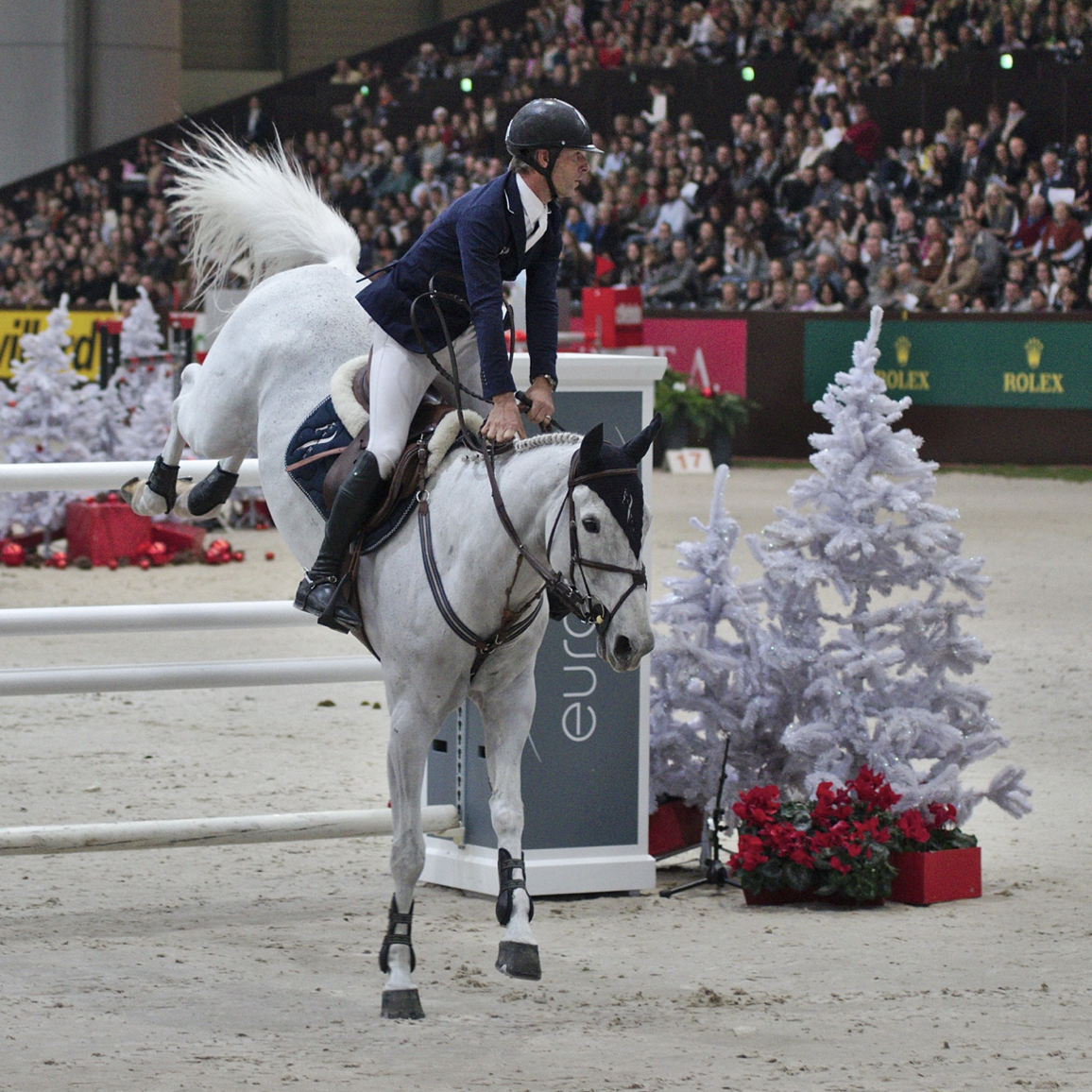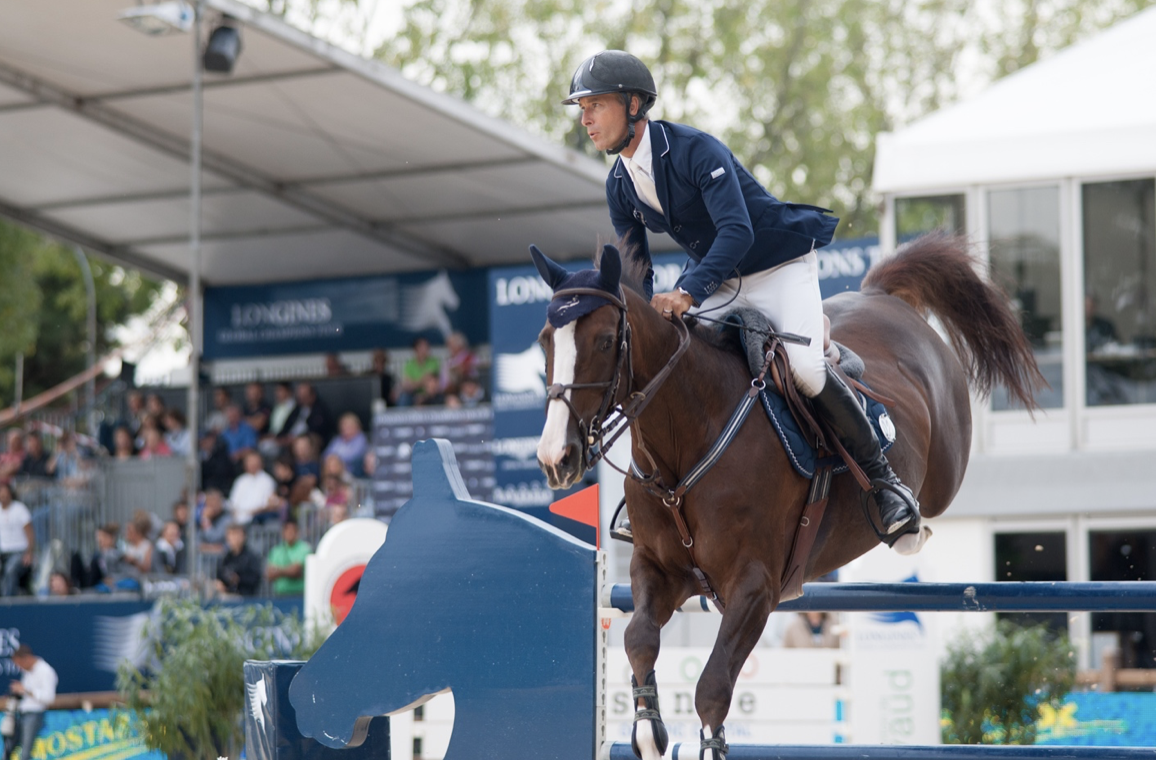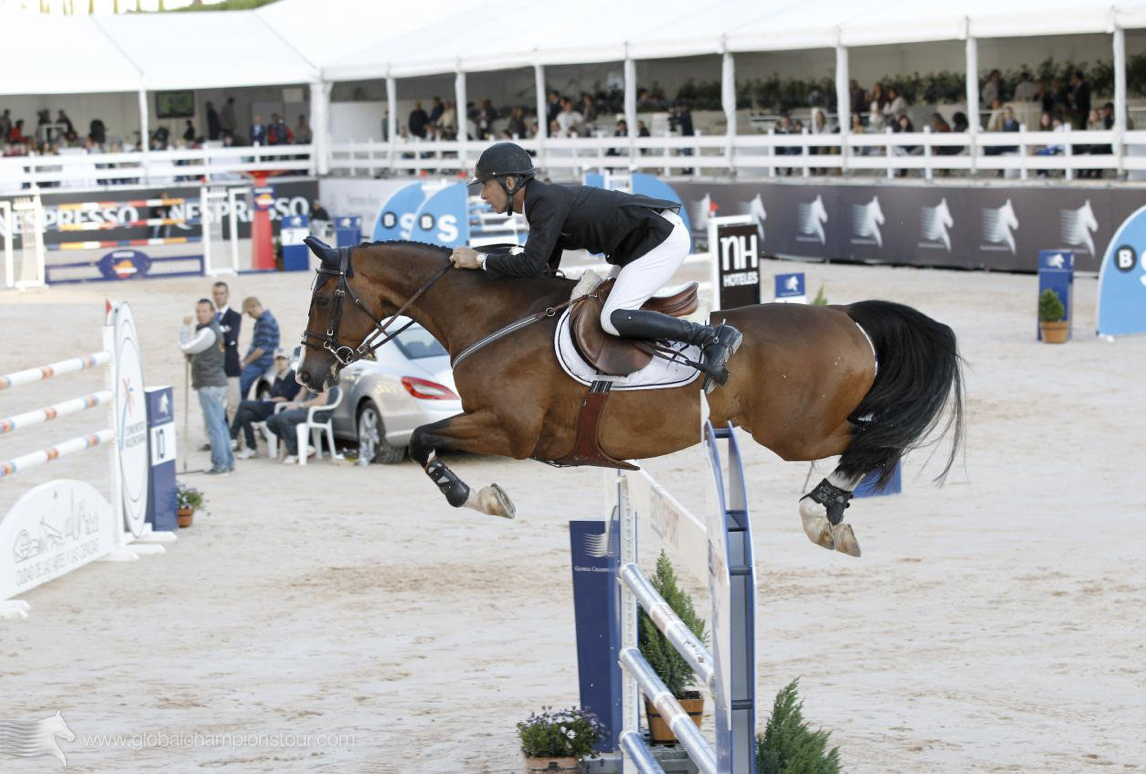
Richard Spooner on Getting to Know New Horses – Part One: The Process
Blog
Richard Spooner on Getting to Know New Horses – Part One: The Process
The prospect of getting a new horse is exciting. Human nature has us wanting to jump right in. Riders want to get started and work towards their goals. However, the best partnerships happen when we know and understand our horse.
Richard Spooner is an internationally recognized rider and trainer with an impressive resume that includes over 100 Grand Prix wins. He competed in 14 consecutive FEI World Cup Show Jumping Finals and has won team medals at the FEI Jumping Nations Cup on multiple occasions. Richard’s nickname is “The Master of Faster” because he rides fast jump-off rounds. A few of his well-known horses include Robinson, Cristallo, and Chivas Z.

Chivas Z and Richard Spooner. Photo: Clément Bucco-Lechat
Ginny Spooner, his mother, owned and operated J. Alden Enterprises in Huntington Beach, California. Richard started riding when he was 10 and turned professional at age 20. He and his wife Kaylen, have their own business and recently relocated to Ocala, Florida from Southern California. They also spent a few years in France while Richard rode and competed on the European circuit.
Thoroughbreds were still commonplace, and Warmbloods were considered oddballs in the early years of Richard’s career. He realized that Warmbloods were the future of the sport and that he needed to learn to communicate in their language because they were so different from Thoroughbreds. Richard wanted to understand how they communicate and be a translator because he knew there would be value in that.
He went to Europe and learned their riding styles and techniques and how those were different than what riders in North America used at the time. As Warmbloods increased in popularity, riders needed help communicating with their horse. Richard stepped in and helped people learn the European techniques and became an interpreter for many riders. These same strategies work when getting to know a new horse.
We asked Richard about the process of getting to know new horses and ensuring a successful relationship. He further explains how to deal with difficult horses in part two of this series.

Billy Bianca and Richard Spooner on the 2013 Longines Global Champions Tour. Photo: Inisheer
The Process
First, Richard stresses that riders must maintain an open mind and not pigeonhole the horse too early. “It’s pivotal that you don’t allow your aspirations and intentions to taint your opinion of the horse,” he says. “Horses don’t know whether you spent $10,000 or $1 million to buy them, they are just horses. People as trainers tend to try and put our hopes, dreams, and desires on their shoulders. That causes trainers and owners to try to force something rather than allow a horse’s talents and abilities to come out organically.”
Riders need to give themselves plenty of time to get to know their new horse. Richard starts by lunging the horse, and he always tries to lunge them personally or watch them. He says that lunging a horse tells you three things:
1. If the horse knows how to lunge,
2. If the horse is sound, and
3. What their fitness level is.
“Sometimes after you purchase a horse, especially if it was imported, they’ve lost some fitness,” he continues. “After you purchase them, there is a period when they’re basically put on ice, they may be hand walked daily, but that’s it. The seller is on the hook with the horse until it leaves the property, they put it on ice while the deal is finished, and the horse is prepared for shipment.”
Imported horses also have a quarantine period before finally shipping to their new location. That’s a lot of time for horses to become unfit, as Richard points out. Lunging the horse helps you get to know a horse and know how much fitness they need to regain.
Lunging wears the horse out a little bit, and now it is safe to get on the horse – there’s no point getting launched on day one. Richard recommends riding the horse on the flat for the first three or four days. Then start little jumps at the end of the week. From that point on, horses normally acclimate within a week, although it’s important to remember that each horse is an individual. Riders should ease back into bigger jumps because the horse sat at the sellers and in quarantine. Bringing horses back to fitness slowly is a long-term thinking strategy meaning the horse will be more likely to have a long career.
“In our excitement, because we just got a new toy, we have a tendency to push in the beginning because we’re trying to convince ourselves that we made the right decision in buying the horse,” Richard says. “But we can do a disservice to the horse by putting too much pressure on it before it’s had time to acclimate to its new environment. You’ll see horses come in and go straight to a show, the first couple of days are great and then it goes south. Those first few days the horse was running on adrenaline like we would and then the exhaustion sets in. It’s a very self-serving way to damage your asset.”

Valencia Grand Prix; Global Champions Tour 2011. Photo: Stefano Grasso
Riders often wonder if the process of getting to know a Grand Prix horse is different from others. Richard tells us, “It’s a new horse, go through the same process and get to know that horse.” He further explains that sometimes Grand Prix horses can be the most difficult to get to know. If someone has ridden a horse for the last four to six years, it takes longer for the new rider to build a rapport with the horse. “If a horse has only been with a rider for six months to two years, it’s generally easier because the horse isn’t set in its ways.” Plan on at least a year to fully get to know a new horse and build a rapport. Knowing the horse well by staying with the process creates the foundation for a successful partnership.
In part two of the series, Richard discusses overcoming challenges with new horses.
